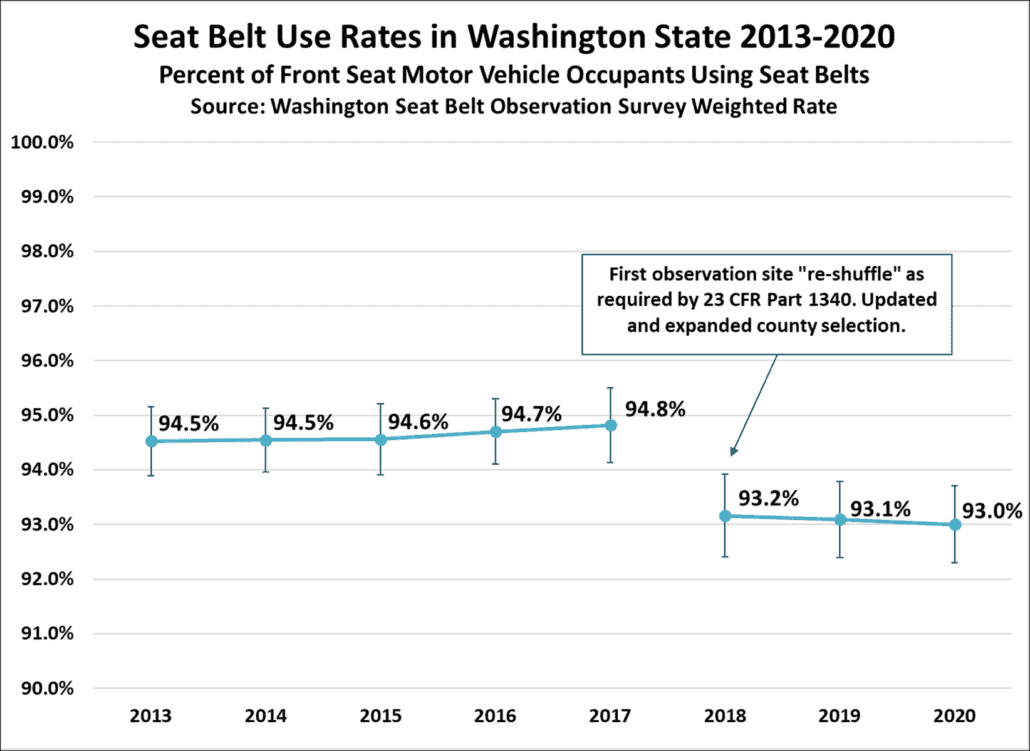Campaign Overview
People in Washington continue to fasten their seat belts at a high rate, 93% in 2020 – roughly were it has been the past three years.
While we can take comfort that the vast majority of us buckle up, we continue to be concerned that 7% do not; and that a large number of those are young drivers. Thirty-five percent of young drivers killed in crashes in 2019 were not restrained, and drivers age 16-25 have the lowest seatbelt use rate of all ages of drivers involved in fatal crashes.
Getting those seat belt holdouts to change is a challenge. So we’re calling in reinforcements.
Ahead of our Click It or Ticket campaign, which begins May 18, we’ve asked moms around the state to record short videos asking their teen or young drivers to buckle-up, using positive community norms principals.
We also have prepared a fact sheet, key message and social media graphics you can use to help get the word out that using your seat belt will save your life.
Seat Belt Use in Washington
- Most Washingtonians – 93% – wear their seat belts.
- All surveyed counties had 2020 seat belt use rates statistically like or better than the statewide seat belt use rate.
- Most county rates are at or near the statewide rate. Counties with decreases from 2019 to 2020 include:
- Clark 2% to 92.6%
- King 3% to 94.4%
- Lincoln 7% to 91.1%
- Skagit 3% to 91.8%
Despite Washington’s high seat belt use rate, people still die on Washington roads who were not buckled up. In 2020:
- The percent of unrestrained fatalities has increased since 2017 – from 18.5% to 20.7% in 2020.
- Of the 560 road deaths in 2020, 116 involved passengers who were unrestrained.
Seat belt use is lowest on county roads at 89.1% compared to 91.4% on city streets and 95% on state routes.
Young Drivers the Least Restrained
- 35% of young drivers who were killed in crashes were not wearing a seatbelt (WTSC Target Zero Performance Dashboard).
- Drivers age 16-25 have the lowest seatbelt use rate of all ages of drivers involved in fatal crashes, according to the 2019 Target Zero State Highway Safety Plan report.
Parents/Guardians Can Make a Difference by Being Road Models
- Research suggests that teens do listen to parents who are involved in their driver training.
- A study published in the Journal of the American Academy of Pediatrics shows that parental involvement leads to safer driving habits, with teens 50% less likely to crash and 50% more likely to buckle up, than teens who perceive their parents as uninvolved.
- The study also showed that teens with involved parents were:
- 71% less likely to drive intoxicated
- 30% less likely to use a cell phone when driving
Resources for families:
https://wadrivetozero.com/car-seats/
Buckle-up to Save Lives
- Seat belts save lives. Your chance of surviving a crash increase by 45% if you are wearing your belt.
- According to the 2019 Target Zero plan, “much of the success in reducing traffic fatalities and serious injuries has occurred because of vehicle design and seat belt use.”
- Nationally, seat belts saved an estimated 14,955 lives in 2017, according to the National Highway Traffic Safety Administration.
De-Bunking a False Sense of Security
It’s easy to buy-in to common misperceptions of security (statistics below are national):
- Big vs. Small: If you’re not buckled up, being in a pickup or other large vehicle isn’t safer. In fact, 61% of pickup truck occupants who were killed in 2016 were not buckled up. That’s compared to 42% of passenger car occupants who were not wearing seat belts when they were killed. Big truck or small car, seat belts are the safest bet.
- Front Seat vs. Back Seat: Too many people wrongly believe they are safe in the back seat unrestrained. Forty-seven percent of all front-seat passenger vehicle occupants killed in crashes in 2016 were unrestrained, but 57% of those killed in back seats were unrestrained. If you’re in the back, buckle-up.
- Rural Road vs. City Street: People who live in rural areas might believe that their crash exposure is lower, but in the U.S. in 2016, there were 13,732 passenger vehicle fatalities in rural locations, compared to 9,366 fatalities in urban locations. Out of those fatalities, 49% of those killed in the rural locations were not wearing their seat belts, compared to 46% in urban locations. Whether on busy city streets or a dusty rural road, buckle up to stay safe.
Seat Belts Save Lives
- Almost everyone wears a seatbelt.
- You nearly double your chances of surviving a motor vehicle crash by buckling up. Fastening your seat belt is the simplest thing you can do to prevent the worst thing.
- We need to convince the 7% who are holding out from buckling up. Many are younger drivers.
- Parents can make a difference when they get involved in making sure their children adopt safe driving habits.
- Keeping children safe in the car starts with selecting the proper car seat and installing it correctly, continues as your kids grow up watching you drive, and then through teaching and coaching them as they become young drivers.
- Teen drivers whose parents are involved in teaching them to drive are twice as likely to wear their seat belts.
- You can help save a life today by getting all of Washington to wear their seat belts:
- Model: Always wear your seat belt
- Discuss: Speak with family members, especially young drivers, about the importance of seat belt use.
- Advocate: Say something when you see someone not wearing their seat belt
- Front seat or back seat, city roads or country roads, big trucks or small cars, it’s the same: Seat belts save lives.
- Ensure you are using the correct child safety restraint for their age and size – visit wacarseats.com to learn more.
Sample Social Media Messages & Graphics
The following are sample graphics and related content that we encourage you to use on your organization’s social media. Feel free to adapt for use on your website or customized emails too.
Listen to your Mother: Wear your seat belt. Everyone is doing it.
Wearing your seat belt drops your risk of fatal injury in a crash by 45%.
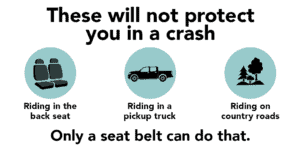
There’s always something more we can do to save lives by getting people to buckle up!
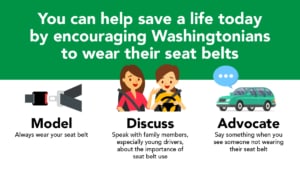
Safety is appealing.
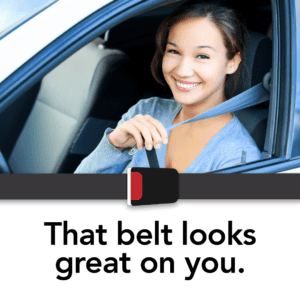
Safety is appealing.
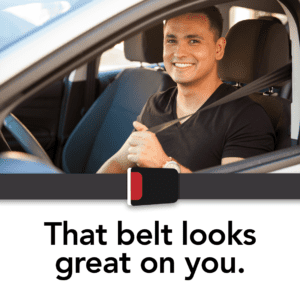
Llénelo. Póngase el cinturón.
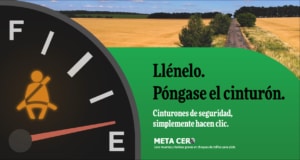
Not wearing a seat belt? Now that’s just scary. Buckle Up
Setting an example: I feel safer when I’m buckled up and when she’s buckled up.
“I know the importance of wearing a seat belt.” Tina, a health care worker and a mom, speaks out.
Video Links
Ahead of our Click It or Ticket campaign, which begins May 18, we’ve asked moms around the state to record short videos asking their teen or young drivers to buckle-up, using positive community norms principals.

